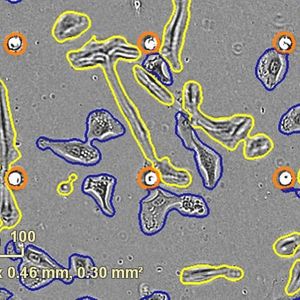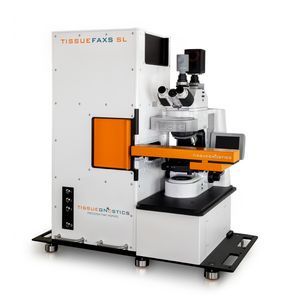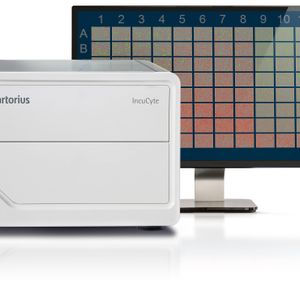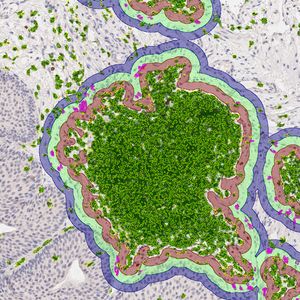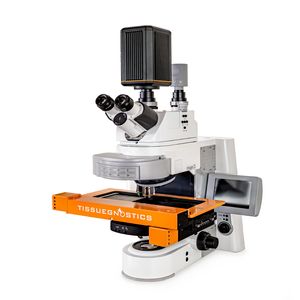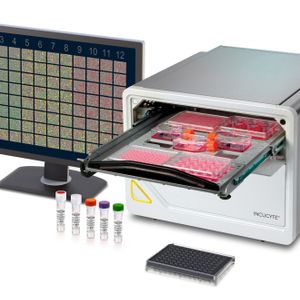Cancer Webinars
Stay informed on developments in cancer and oncology diagnosis, prevention and treatment through these curated webinars. As the race toward a cure for cancer continues, advances in cancer research are constantly revealed as innovation in the field of oncology progresses.
Show More
-
OCT 11, 2017 | 10:30 AMExosomes are nano-scale lipid membrane-enclosed extracellular vesicles that form in the cellular endosomal system but are released outside the cell. These virus-sized “fat balls”...
-
OCT 11, 2018 | 10:30 AMTwo projects looking at novel approaches to targeting inflammatory breast cancer will be presented. Inflammatory breast cancer (IBC) is a unique, understudied, and most lethal subtype account...
-
OCT 11, 2018 | 12:00 PMLung cancer is the leading cause of cancer-related mortality worldwide. Large-scale sequencing studies have revealed the complex genomic landscape of NSCLC and genomic differences between lun...
-
OCT 11, 2018 | 12:00 PMAlthough targeted therapies often elicit profound initial patient responses, these effects are transient due to residual disease leading to acquired resistance. How tumors transition between...
-
MAY 19, 2020 | 11:45 AMPancreatic ductal adenocarcinoma (PDAC) remains a treatment-refractory disease and existing molecular subtypes do not inform clinical decisions. Previously-identified bulk transcriptomic sub...
-
OCT 11, 2017 | 1:30 PMPancreatic cancer is one of the “deadly” cancers, defined as those with a 5-year relative survival rate of less than 50%. Although ranking 12th in terms of incidence, it is...
-
OCT 08, 2020 | 7:30 AMIndividuals of under-represented minority ancestry are at disproportional risk for higher incidence and mortality rates for particular cancers. The unequal burden of cancer in certain racial...
-
NOV 10, 2021 | 11:59 PMThe proportion of cell-free DNA (cfDNA) derived from tumor cells in the plasma of patients with cancer is typically less than 2%. To overcome this limitation, methods have been developed to...
-
OCT 12, 2017 | 12:00 PMAcral lentiginous melanoma (ALM) is a rare sun-shielded melanoma subtype associated with worse survival than cutaneous melanoma (CM), a more common form of skin cancer linked to exposure to u...
-
OCT 12, 2017 | 10:30 AMMr. Getson, a USA immigration lawyer, focuses on EB-1A(Extraordinary ability) and NIW (National Interest Waiver) cases, the primary categories in which scientific researchers qualify for gree...
-
MAY 20, 2020 | 11:15 AMMetastatic prostate cancer (mPC) is a phenotypically diverse disease with poor responses to immune based therapeutics. Development of immunotherapeutic strategies for mPC is hampered by the...
-
OCT 07, 2020 | 9:00 AMRobotic partial nephrectomy (RPN) has increasingly been applied to the treatment of small renal masses. Because of space limitations and the size of the robot at the patient side, the standa...
-
OCT 07, 2020 | 1:30 PMJoin Branden Hopkinson, Product Marketing Manager at Visiopharm, who will talk about using AI classifiers to find patterns in your images and which artificial intelligence method will work b...
-
OCT 09, 2019 | 12:00 PMThis presentation will review the utility of multiparametric MRI (mpMRI) and genomic testing in the management of early stage prostate cancer and show when and if such tests should be used al...
-
OCT 11, 2017 | 7:30 AMThe first small molecule inhibitor of the molecular chaperone Heat Shock Protein 90 (HSP90) was identified more than 20 years ago. Upon determination of the drug binding site and clarificatio...
-
OCT 11, 2018 | 7:30 AMIn the past two decades a small number of infrequently dividing cells have been proposed as the source of multi-drug resistance during cancer treatment. These cells identified by their expres...
-
OCT 08, 2020 | 12:00 PMAntibodies have become one of the most important tools in life science research, allowing the detection, quantitation, and determination of changes in proteins and other molecules with respe...
-
OCT 07, 2020 | 12:00 AMActivating mutations in PIK3CA are frequent in human breast cancer, and phosphoinositide 3-kinase alpha (PI3Kα) inhibitors have been approved for therapy. To characterize determinants...
-
OCT 10, 2018 | 12:00 PMTo date the anatomic extent of tumor (TNM-classification) has been by far the most important factors to predict the prognosis of cancer patients. However, this classification provides limited...
-
OCT 07, 2020 | 6:00 AMThis lecture will encompass the learning experience I have had over my 14,000 RALP cases. We will present an evidence based prospective data collection and analysis of RALP outcomes. We will...
-
OCT 10, 2019 | 6:00 AMIn this webinar, we will be discussing some of our most recent testing using our Cas9 proteins, Cas9 RNP nickases in a variety of human cell types, including primary T-cells. Cas nucleases wh...
-
OCT 10, 2019 | 9:00 AMBlockade of CTLA-4 and PD-1, members of the B7/CD28 family, have proven to be the most successful cancer immunotherapies to date. While the current therapeutic focus remains on B7/CD28 family...
-
OCT 06, 2021 | 10:30 AMEffective immunotherapy of pancreatic ductal adenocarcinoma (PDAC) is hampered by the lack of suitable tumor-specific antigens. To address this challenge, we have combined high-throughput fl...
-
APR 02, 2025 | 11:00 AMJoin this year's poster presenters in the Poster Hall during the Poster Networking Hour, Wednesday, September 20th, from 10:00 AM –11:00 AM PDT , to chat live about their posters a...
-
OCT 11, 2017 | 6:00 AMThere has been a great deal of renewed attention in immuno-oncology over the last decade. Therapies for cancer are being developed, approved, and administered that can either initiate,...
-
OCT 11, 2018 | 1:30 PMAs the most common female malignancy, breast cancer is the most likely reason that a woman will die of cancer around the world. Breast cancer mortality has dropped in the U.S. by 35% since 19...
-
OCT 07, 2020 | 7:30 AMThis webinar covers our latest solutions for improved culture of primary and xenotransplanted tumor cells. Get insights into dissociation of fresh tumor samples into viable single-cell suspe...







































